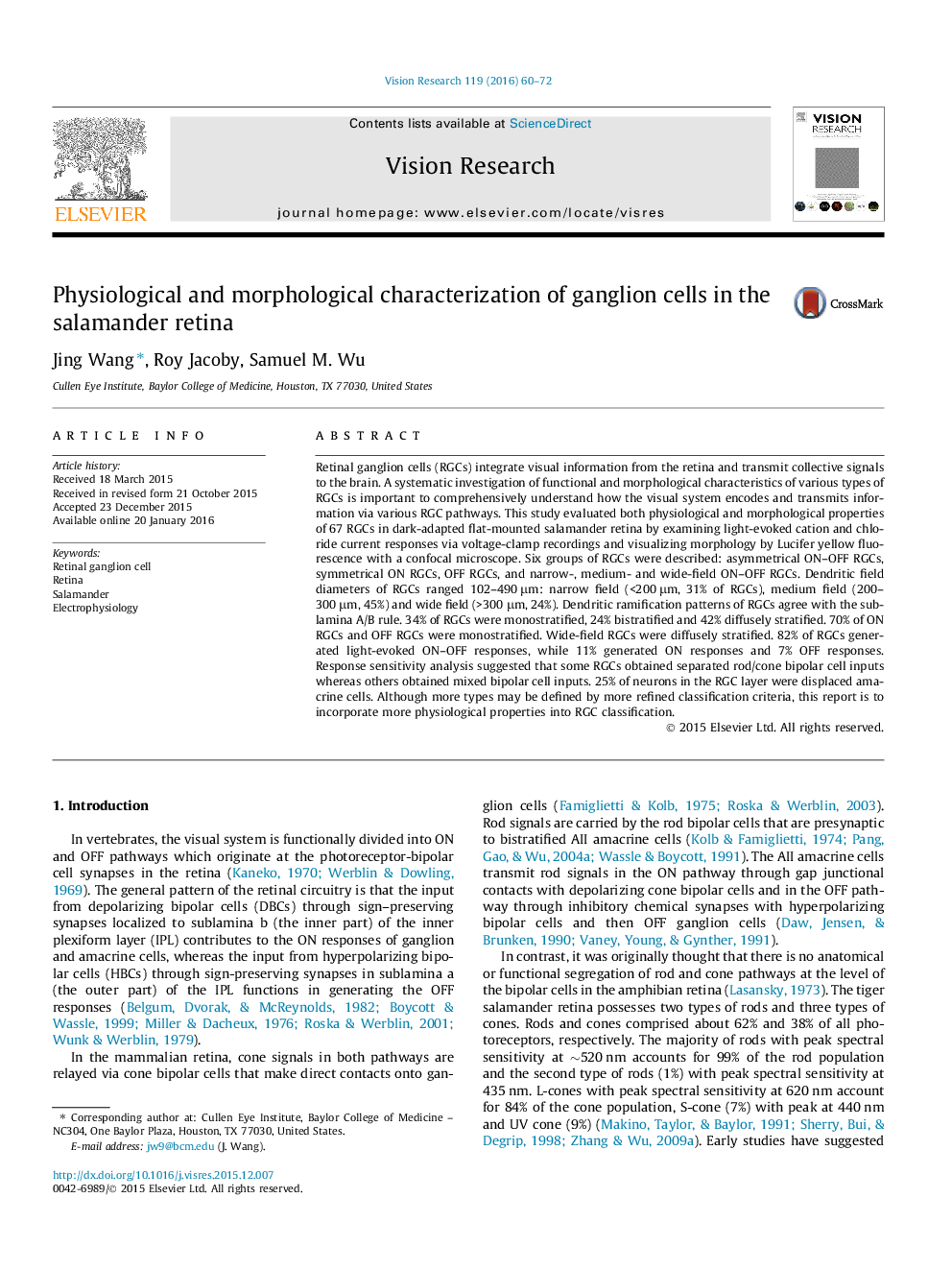| Article ID | Journal | Published Year | Pages | File Type |
|---|---|---|---|---|
| 6203051 | Vision Research | 2016 | 13 Pages |
•Six groups of retinal ganglion cells (RGCs) are described.•Some RGCs receive segregated bipolar cell inputs.•25% of neurons in RGC layer are displaced-amacrine-cells.
Retinal ganglion cells (RGCs) integrate visual information from the retina and transmit collective signals to the brain. A systematic investigation of functional and morphological characteristics of various types of RGCs is important to comprehensively understand how the visual system encodes and transmits information via various RGC pathways. This study evaluated both physiological and morphological properties of 67 RGCs in dark-adapted flat-mounted salamander retina by examining light-evoked cation and chloride current responses via voltage-clamp recordings and visualizing morphology by Lucifer yellow fluorescence with a confocal microscope. Six groups of RGCs were described: asymmetrical ON–OFF RGCs, symmetrical ON RGCs, OFF RGCs, and narrow-, medium- and wide-field ON–OFF RGCs. Dendritic field diameters of RGCs ranged 102–490 μm: narrow field (<200 μm, 31% of RGCs), medium field (200–300 μm, 45%) and wide field (>300 μm, 24%). Dendritic ramification patterns of RGCs agree with the sublamina A/B rule. 34% of RGCs were monostratified, 24% bistratified and 42% diffusely stratified. 70% of ON RGCs and OFF RGCs were monostratified. Wide-field RGCs were diffusely stratified. 82% of RGCs generated light-evoked ON–OFF responses, while 11% generated ON responses and 7% OFF responses. Response sensitivity analysis suggested that some RGCs obtained separated rod/cone bipolar cell inputs whereas others obtained mixed bipolar cell inputs. 25% of neurons in the RGC layer were displaced amacrine cells. Although more types may be defined by more refined classification criteria, this report is to incorporate more physiological properties into RGC classification.
